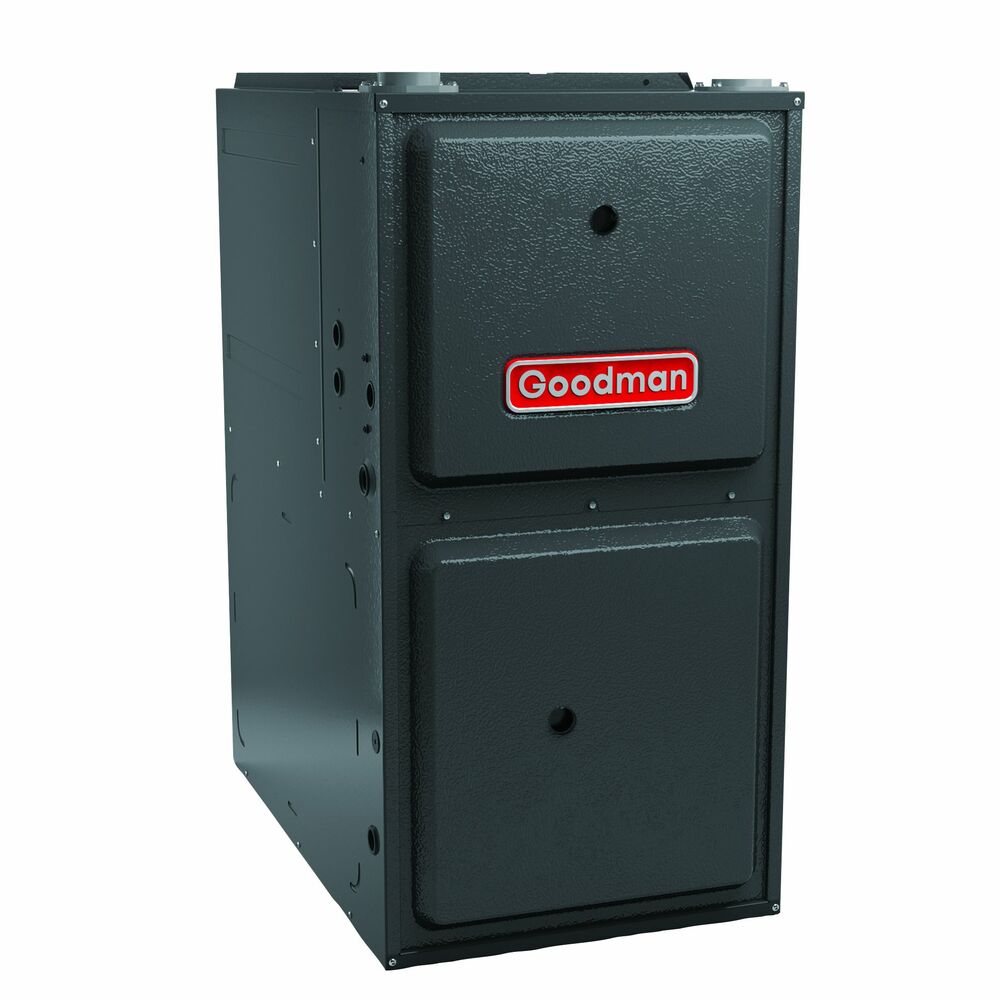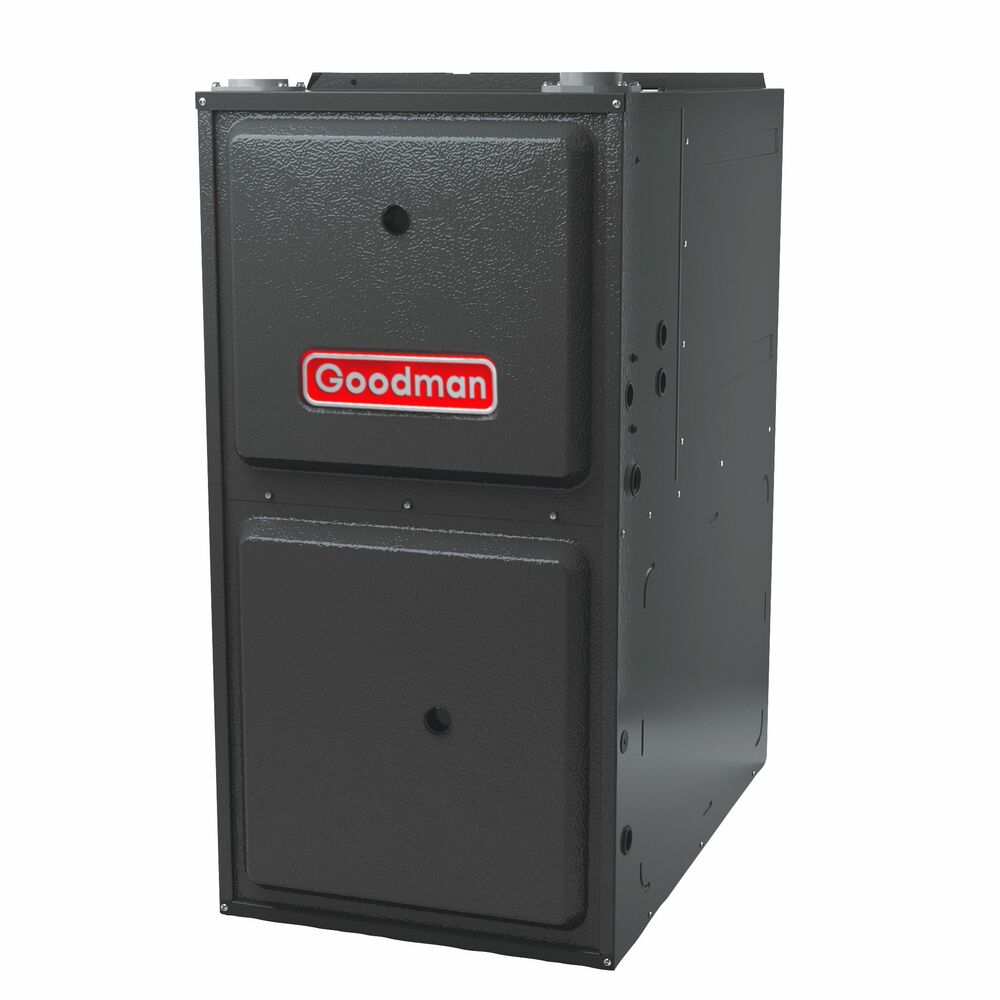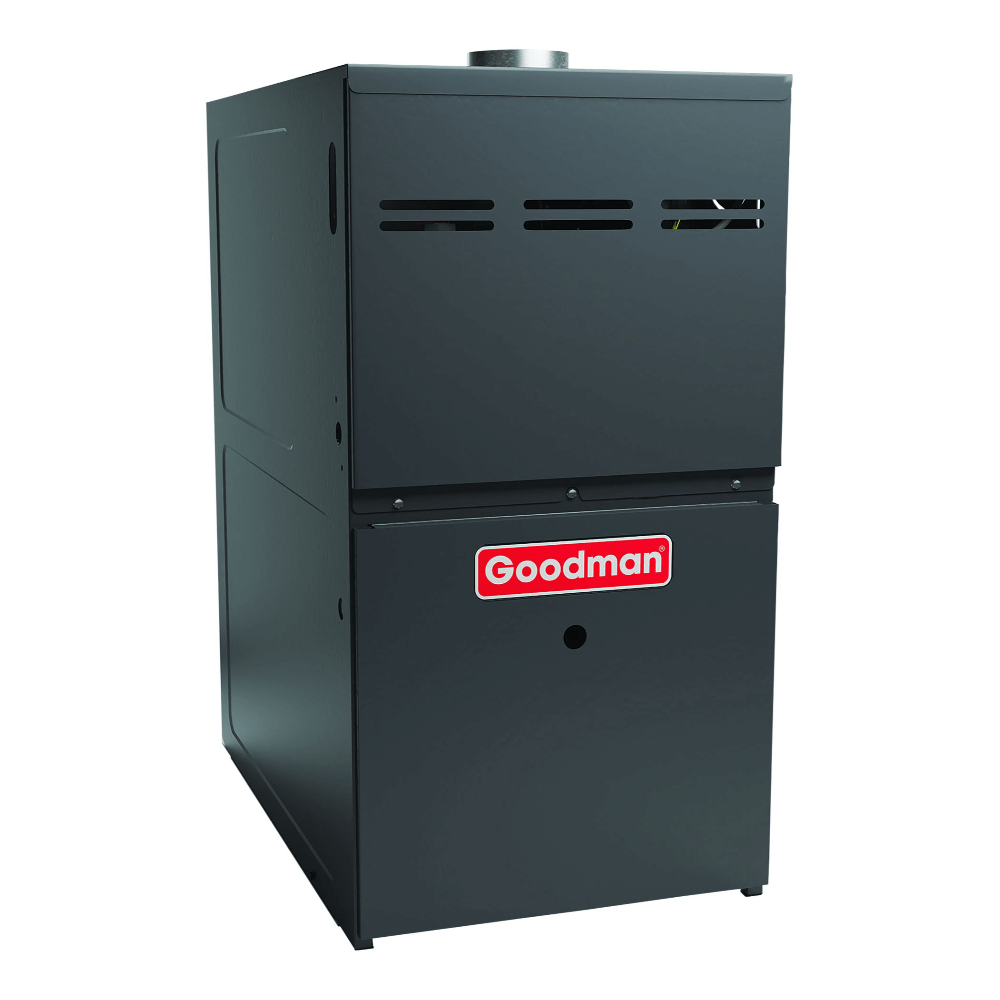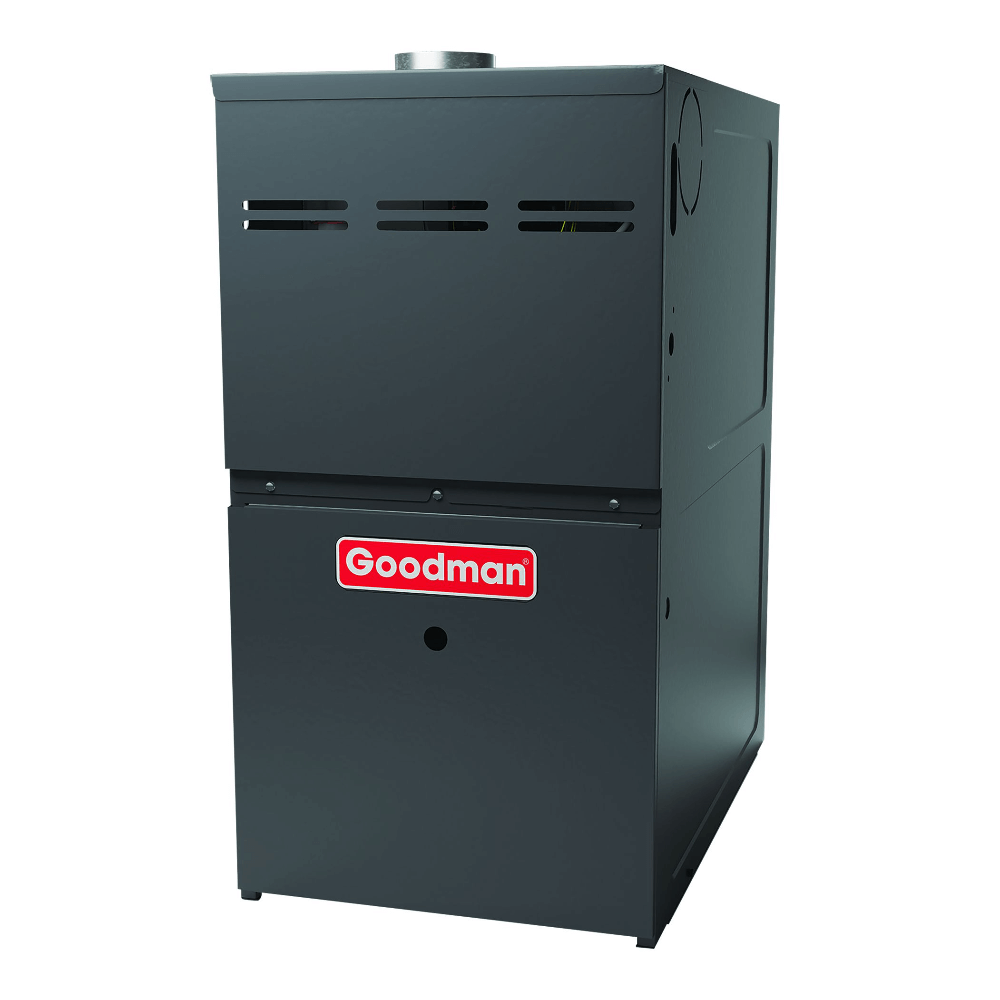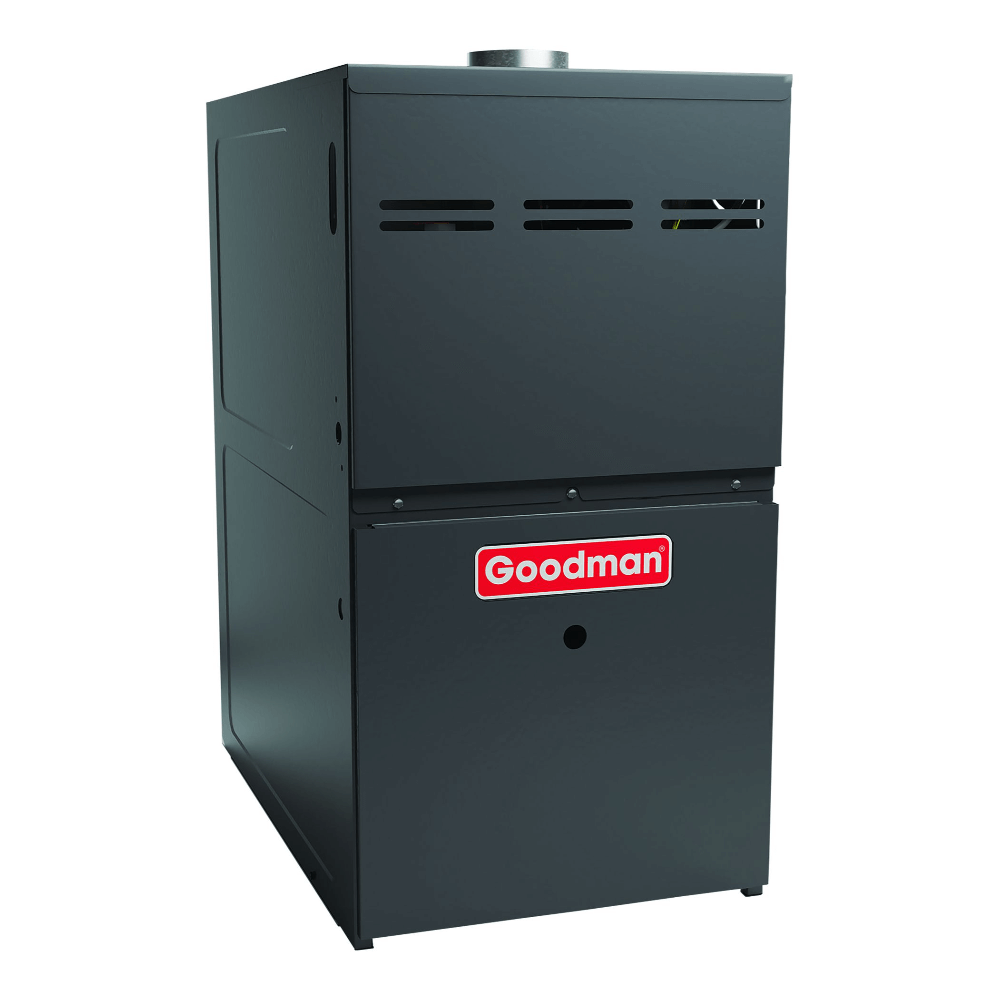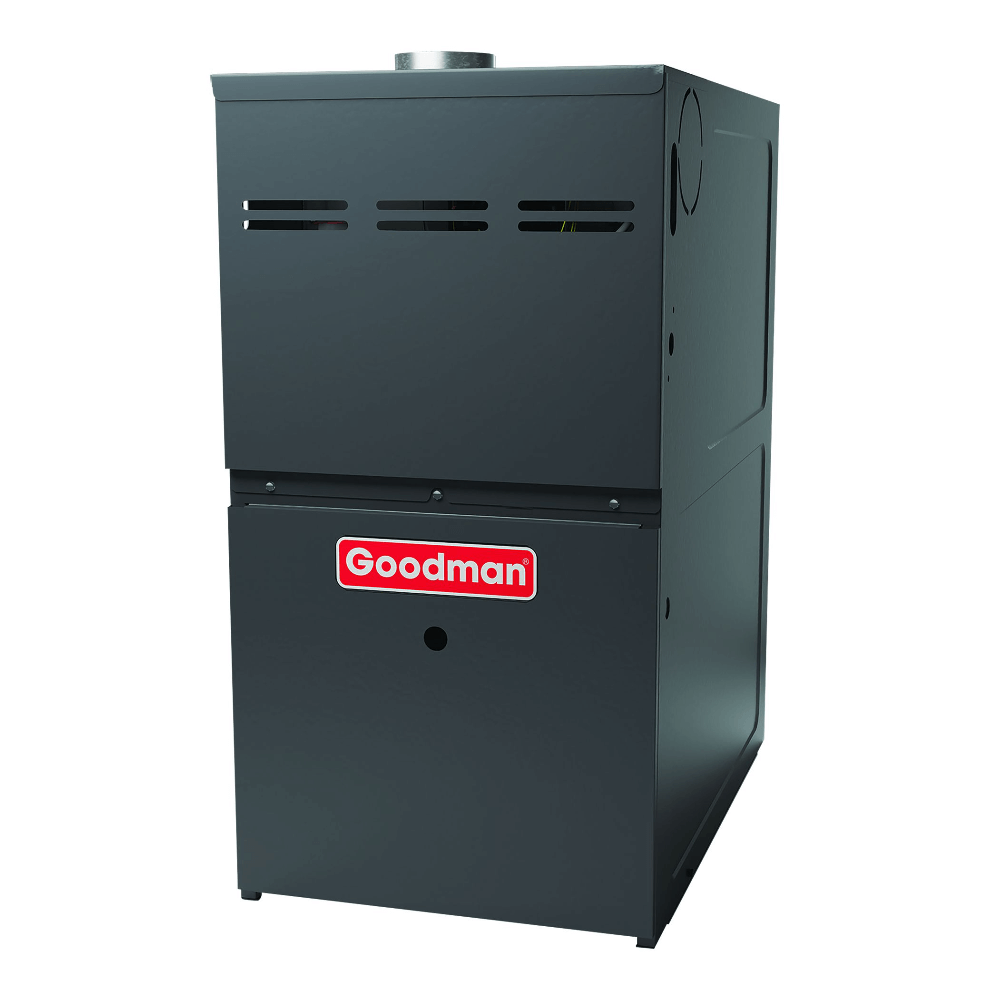Choosing a heating system for your home can feel overwhelming when you discover how many types of heating systems exist. Although there are many heating systems, not every system is suitable for every home. Picking an appropriate system for your climate, home size, and other circumstances is critical to maintaining a comfortable home environment and affordable energy bills. According to the U.S. Census Bureau, home heating systems account for almost half of a household’s energy usage.
Different energy sources power each heating system. A 2019 American Community Survey by the U.S. Census Bureau revealed that 48% of homes used natural gas, 38.9% used electricity, and just 0.2% used solar power. Propane and fuel oil are additional fuels used for heating. A heating system’s fuel source is a leading factor to consider when choosing a system for your home.

Find the Ideal Furnace for Your Home: View Our Products
Types of Heating Systems
Each heating system has specific applications, equipment requirements, an ideal climate, one or more fuel sources, and a distribution system. Consider these factors along with the pros and cons of each system.
Forced Air System
Forced air heating is the most common system. This system utilizes a furnace and ductwork. What is a furnace? A furnace burns fuel or warms electric elements and transfers the heat to the air. A blower fan forces the heated air into the ductwork and out of the vents in each room. Cold air circulates back to the furnace through return ducts.
Best For: Regions with freezing temperatures, such as the Northeast, Midwest, and Northwest
Fuel Source: Natural gas, propane, oil, or electricity
Distribution: Forced air through ductwork
Pros:
- Warms home quickly
- An air conditioner can use the same ductwork
- Highest AFUE (annual fuel utilization efficiency) ratings of any system
- A whole house humidifier can be added
Cons:
- Gas furnaces pose fire, explosion, and carbon monoxide risks
- Noise from the furnace fan and expanding/contracting metal in the ducts
- Requires routine filter changes and regular maintenance
- Requires ductwork and space in the walls
- Ductwork is difficult and expensive to install in existing houses
- Creates dry, allergen-filled air
- Heats the air, not the objects in rooms
In-Floor Radiant Heating Systems
In-floor radiant systems consist of plastic hot water tubing or electric wiring laid beneath the floors. Hydronic heating systems utilize a boiler to heat water and pipes to circulate the hot water through the tubes under the flooring. Hydronic systems are preferred for whole-house heating, while electric radiant systems are best for supplemental heat in bathrooms or other individual rooms.
Best For: Regions with mild winters, such as the West, Southwest, South, and Southeast
Fuel Source: Natural gas, propane, oil, electricity, or solar
Distribution: Radiant heat from the hot water tubes or electric wiring beneath the flooring
Pros:
- Don’t circulate allergens or create dry air
- Ability to control temperatures in individual rooms
- Warm floors and even temperatures throughout rooms
- Quiet operation
- Energy efficient
- Doesn’t require ductwork
- Low maintenance and long lifespan
Cons:
- Take longer to heat up
- Require space in the walls for pipes
- Pipes behind walls and tubes or wires beneath floors are challenging to access if a problem arises
- Pipes, tubes, and wiring are difficult and expensive to install in existing houses
- Cannot be combined with air conditioning systems
- Pipes can freeze during power outages
Traditional Boiler and Radiator Systems
Older homes commonly rely on a boiler vs. a furnace for heating. A centralized boiler heats water, and pipes circulate the hot water or steam to radiators positioned throughout the house. Heat transfers to the air and objects in the room as the hot water or steam circulate through the radiators’ metal pipes.
Best For: Heating a whole house with radiant heat; regions with mild winters such as the West, Southwest, South, and Southeast
Fuel Source: Natural gas, propane, oil, biodiesel blends, or electricity
Distribution: Radiant heat from the hot water or steam circulating in radiators’ metal pipes
Pros:
- Don’t circulate allergens or create dry air
- Radiators can be updated
- Modern boilers are energy efficient
- Radiator installation is relatively inexpensive
Cons:
- Cannot be combined with air conditioning systems
- Radiators are large and unsightly
- Radiators limit furniture and drapery placement
- Take longer to heat up
- Pipes can freeze during power outages

Find the Ideal Furnace for Your Home: View Our Products
Hot Water Baseboard Heater
Like radiators and radiant flooring, hot water baseboard heaters are a hydronic heating system. Baseboard heaters are a modern version of traditional radiator systems. A centralized boiler heats water and pumps it through pipes to heating units installed along the baseboards in each room. Heat radiates from the hot water via the units’ metal fins, and cold air sinks to the unit to be heated. The water returns to the boiler to be reheated.
Best For: Radiant heating on a smaller scale; regions with mild winters such as the West, Southwest, South, and Southeast
Fuel Source: Natural gas, propane, oil, or electricity
Distribution: Natural convection from hot water circulating through heaters; metal fins on heaters facilitate the heat transfer
Pros:
- Precise temperature controls
- Water in the heaters stays warm longer than the coils in electric heaters, which cool down immediately after the current is shut off
- Low maintenance and long lifespan
- Energy efficient
- Quiet operation
- Can be installed individually or as a whole-house system using a single boiler
Cons:
- Pet fur can be sucked in and block airflow
- More expensive equipment than electric baseboard systems
- Heaters limit furniture and drapery placement
- Cannot be combined with air conditioning systems
- Heat up slowly
- Pipes can freeze during power outages
Heat Pumps
The main distinction between a heat pump vs. furnace is that heat pumps don’t generate heat; they transfer heat like air conditioners. An outdoor pump draws heat from outside the house and releases it inside via an air handler. Air-source heat pumps draw heat from the outdoor air and are the most affordable heat pump style. Ground-source and water-source heat pumps provide geothermal heating and cooling and are more expensive to install.
The Inflation Reduction Act of 2022 includes a heat pump subsidy for heat pumps installed between January 1, 2023, and 2032. Consumers can receive rebates and tax credits for installing new heat pumps.
Best For: heating and cooling with or without ductwork; regions with mild winters such as the West, Southwest, South, and Southeast
Fuel Source: Typically electricity, but some are natural gas
Distribution: Forced air through ductwork or fan-blown air from ductless units
Pros:
- Provide heating and cooling
- Ductwork is not required for wall units, but existing ductwork can be utilized for forced-air systems
- Energy efficient
- Low operating costs
- Ductless systems provide precise temperature control for each room and quiet operation
Cons:
- Unsuitable for cold climates
- Ductless systems have separate controls in each room
- High equipment and installation costs for geothermal heat pumps
- Require routine filter changes and regular maintenance
Electric Resistance Heating Systems
Electric heaters convert an electric current to heat like a toaster. These systems are typically used for supplemental heat because of the high operating costs. Electric heaters are good additions to basements, sunrooms, garages, and other unheated or cold rooms that require additional or occasional heat.
Baseboard heaters are slim units installed along baseboards that can be used as the primary heating system. They contain metal rods that heat up when an electric current is applied. Metal fins along the heaters distribute heat to the room through natural convection.
Radiant heaters and portable space heaters are solely for supplemental heat. Radiant heaters don’t utilize fins or a fan to distribute heat. They are typically installed near the ceiling and pointed toward spaces that require heat. Heat radiates from the heaters to nearby people and objects. Portable space heaters are self-contained units that convert electricity from the wall socket into warmth, and a small fan distributes the heat to the room. Portable heaters have very high operating costs.
Best For: Supplemental heating; baseboards heaters as the primary system as best for regions with mild winters such as the West, Southwest, South, and Southeast
Fuel Source: Electricity
Distribution: Natural convection from baseboard units, radiant heat, or an internal fan blows air from portable units
Pros:
- Portable and can be set up anywhere
- Low installation costs
- Ability to control the temperature in individual rooms
Cons:
- Consume large amounts of electricity
- High operation costs
Hybrid Heating
A hybrid heating system or dual fuel heat pump incorporates a heat pump, a natural gas furnace, and ductwork. The heat pump primarily provides the home’s heat. The furnace offers supplemental heat during extremely cold conditions that are unmanageable for a heat pump.
Best For: Regions with freezing temperatures, such as the Northeast, Midwest, and Northwest
Fuel Source: Electricity and natural gas
Distribution: Forced air through ductwork
Pros:
- Provides heating during winter and cooling during summer
- Capable of managing freezing temperatures
- Heat pumps are energy efficient
- Less strain on the system because the two components share the load
Cons:
- Heat pumps and furnaces require regular filter changes and routine maintenance
- Gas furnaces pose fire, explosion, and carbon monoxide risks
- Noise from the furnace fan and expanding/contracting metal in the ducts
- Require ductwork and space in the walls
- Ductwork is difficult and expensive to install in existing houses
- Can create dry and allergen-filled air
- Heats the air, not the objects in rooms
Gravity Air Furnace
This outdated system consists of a furnace and ductwork. Unlike modern furnace systems that blow air through the ducts, gravity systems allow warm air from a basement furnace to rise naturally through the vents and cold air to sink toward the furnace.
Best For: These systems are no longer installed
Fuel Source: Typically natural gas, propane, or oil; rarely electricity
Distribution: Natural convection through ductwork
Pros:
- Low maintenance and long lifespan because of few moving parts
- Quiet operation
Cons:
- Heats slowly
- Ineffective air filtering
- Less energy-efficient than modern furnace systems

Find the Ideal Furnace for Your Home: View Our Products
Which Type of Heating System is Best for Your Home?
Forced-air systems are prevalent in all regions of the country because they are effective, are made for several energy sources, and can combine heating and cooling systems. Forced-air systems are particularly effective in regions that experience cold winters and freezing temperatures because they heat up quickly and deliver high temperatures, but ductwork is required.
Heat pumps are ideal for milder climates because they are highly energy-efficient and can be used for heating and cooling. Ducted and ductless heat pump models are available. Hybrid systems that combine energy-efficient heat pumps and powerful gas furnaces are a good alternative for cold regions.
Hydronic heating systems such as radiant flooring, radiators, and hot water baseboard heaters are good ductless options for energy-efficient, pervasive radiant heat. These systems require the installation of boilers and piping.
Electric resistance heating systems are primarily for supplemental heating because of the high cost of electricity. Still, electric baseboard heaters can be used as the primary system in regions with mild winters.
Gravity air furnaces are obsolete, but they have long lifespans and continue to operate in some older homes.
Frequently Asked Questions
Which heating system also can be used for cooling?
Heat pumps and hybrid systems can be used for heating and cooling. Heat pumps transfer heat using refrigerants. During cold weather, heat is transferred from outside to inside, and heat is transferred from inside to outside during hot weather.
Which heating system is most efficient?
Geothermal heat pumps are the most efficient heating system because they transfer heat from beneath the earth’s surface rather than generate heat like typical heating systems. Geothermal heat pumps are costly, but they can drastically reduce heating costs.
What is the cheapest way to heat your house in the winter?
A natural gas furnace is the cheapest way to heat your house in the winter. Natural gas costs less than electricity, and natural gas furnaces provide powerful and immediate heat.


